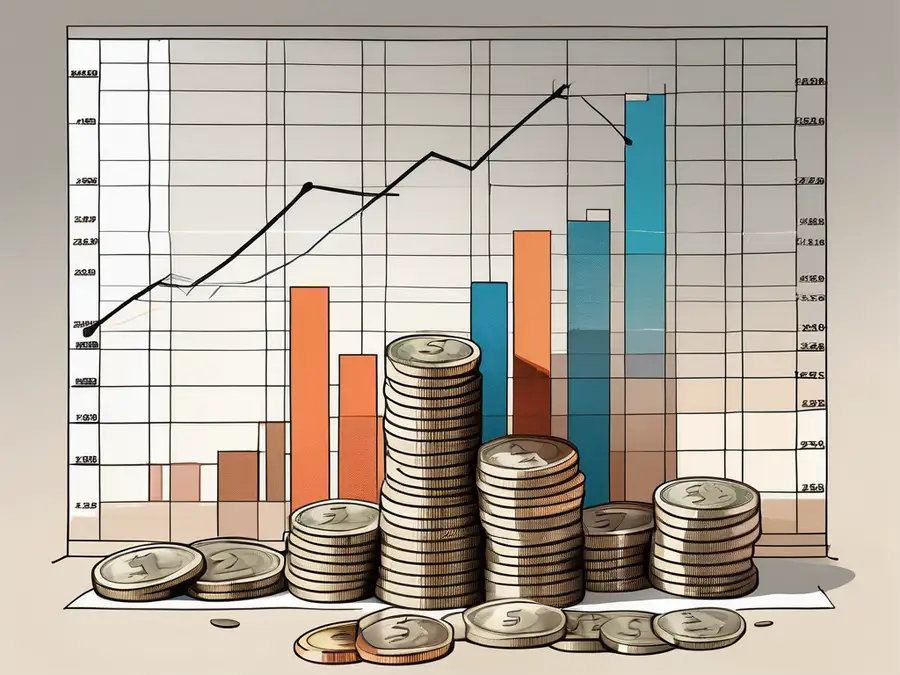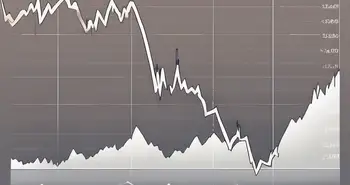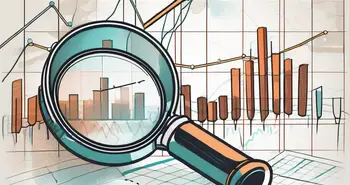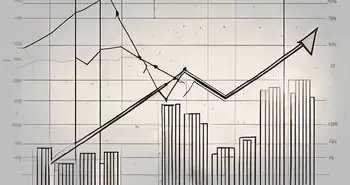Article Contents
The Wall of Money in Stock Market July 2024

The stock market in July 2024 has been buzzing with excitement and intrigue, thanks to a phenomenon known as the ‘Wall of Money.' As an expert in the field, I am here to shed light on this intriguing concept and its impact on investors. So, buckle up and let's dive in!
Understanding the ‘Wall of Money' Phenomenon
First things first, let's grasp the concept of the ‘Wall of Money.' In simple terms, it refers to a massive influx of funds into the stock market, creating a surge in stock prices. This surge is often driven by various factors, including loose monetary policies, increased investor confidence, and robust economic growth.
But why is this phenomenon called the ‘Wall of Money'? Well, imagine a giant wall made up of dollar bills flooding the stock market, pushing prices upward and creating a sense of exhilaration among investors.
The Concept of ‘Wall of Money'
At its core, the ‘Wall of Money' reflects a significant influx of capital into the stock market. This influx can originate from individual investors, institutional investors, or even foreign investors. Regardless of the source, this sudden surge in liquidity can have a profound impact on stock prices.
Factors Contributing to the ‘Wall of Money'
Several factors contribute to the formation of the ‘Wall of Money.' Firstly, loose monetary policies pursued by central banks can result in abundant liquidity and low-interest rates, enticing investors to seek higher returns in the stock market.
Secondly, increased investor confidence plays a crucial role in attracting money into the market. When investors perceive favorable economic conditions, they become more willing to take on risk and invest in stocks.
Lastly, robust economic growth is a significant driver of the ‘Wall of Money.' When economies are thriving, investors anticipate higher corporate profits and flock to the stock market in the hopes of reaping substantial returns.
The Role of Global Economies
To truly understand the impact of the ‘Wall of Money' in July 2024, we need to consider the role of global economies, particularly the United States and Asian countries.
Impact of US Economy on Stock Market
As the world's largest economy, the United States holds considerable sway over global financial markets. Any shifts in US economic indicators, such as GDP growth, employment figures, or inflation rates, can significantly influence investor sentiment worldwide.
With the US economy experiencing robust growth and a supportive monetary policy stance, investors are attracted to the stock market as they anticipate higher corporate profits and increased market valuations. Notably, the anticipation of a possible interest rate cut by the Federal Reserve has further fueled this optimism, as lower interest rates typically boost stock market investments.
Influence of Asian Economies on Stock Market
The impact of the ‘Wall of Money' is not limited to the US alone. Asian economies, including China and India, also play a pivotal role in the stock market's performance.
China, with its growing middle class and burgeoning technology sector, has emerged as a major powerhouse in the global economy. A favorable economic outlook in China often translates into increased investment flows into the stock market, further fueling the ‘Wall of Money' phenomenon. For instance, significant investments in green technology and digital infrastructure have been key drivers.
Similarly, India's rapid economic growth and pro-business reforms have positioned it as an attractive investment destination. As investors search for higher returns, they are drawn to the Indian stock market, adding to the ‘Wall of Money' effect. Recent developments such as increased foreign direct investment (FDI) and a boom in the tech sector have been particularly influential.
Sector-wise Analysis of Stock Market in July 2024
Now let's shift our focus to the performance of specific sectors in the stock market during July 2024.
Performance of Tech Stocks
The technology sector has been a front-runner in driving the ‘Wall of Money.' Tech giants, such as Apple, Amazon, and Microsoft, have consistently reported impressive earnings, drawing the attention of investors seeking innovative and high-growth opportunities. Additionally, the rapid advancements in artificial intelligence and renewable energy technologies have spurred significant interest and investments.
However, it is important for investors to exercise caution and perform thorough research before diving headfirst into tech stocks. While these stocks have tremendous potential, they also carry inherent risks, including market volatility and regulatory scrutiny.
Analysis of Healthcare Stocks
The healthcare sector has also been a beneficiary of the ‘Wall of Money.' The ongoing pandemic, coupled with increased government spending on healthcare infrastructure, has propelled the performance of pharmaceutical and biotech companies. Noteworthy advancements in gene therapy and personalized medicine have also attracted considerable investor interest.
As an expert, I must stress the importance of diversification within the healthcare sector. While some companies may experience significant gains, others may face challenges due to regulatory hurdles or clinical trial outcomes. A well-balanced portfolio within the healthcare space is crucial for long-term success.
The Impact of Wall of Money on Individual Investors
Now, let's talk about the impact of the ‘Wall of Money' on individual investors like you and me.
Investment Strategies Amidst the Wall of Money
With increased liquidity and soaring stock prices, many investors are tempted to dive headfirst into the market. However, it's essential to approach investing with a well-thought-out strategy.
One valuable approach is to stick to long-term investment goals rather than getting swayed by short-term market movements. By focusing on fundamentally strong companies and diversifying across sectors, investors can navigate the ‘Wall of Money' while minimizing risks.
Risks and Opportunities for Individual Investors
While the ‘Wall of Money' presents exciting opportunities for investors, it is not without risks. The surge in stock prices can create a sense of euphoria, leading some investors to overlook fundamental analysis or risk management.
As an expert in the field, I strongly advise staying vigilant and conducting thorough research before making investment decisions. It's crucial to assess risks, set realistic expectations, and seek professional guidance if needed.
Predictions for the Future of Stock Market
As we look towards the future, it's only natural to wonder what lies ahead for the stock market.
Short-term Predictions Post July 2024
In the short-term, the ‘Wall of Money' is likely to continue influencing stock market performance. However, it's important to keep an eye on factors such as inflation, interest rate hikes, and any unforeseen events that could disrupt the current market trends.
Additionally, geopolitical tensions and regulatory changes can impact investor sentiment and ultimately influence the direction of the stock market. Staying informed and regularly reviewing investment strategies will be crucial during this period.
Long-term Predictions for the Stock Market
In the long run, the stock market's trajectory will depend on various factors, including economic growth, technological advancements, and geopolitical stability.
While it's impossible to predict with absolute certainty, historical data has shown that the stock market has consistently delivered solid returns over extended periods. Therefore, maintaining a long-term perspective and adopting a disciplined investment approach remain key to capitalizing on the market's potential.
Frequently Asked Questions (FAQ)
What is the ‘Wall of Money' phenomenon?
The ‘Wall of Money' refers to a significant influx of funds into the stock market, driving up stock prices and creating a sense of excitement among investors.
What factors contribute to the formation of the ‘Wall of Money'?
The ‘Wall of Money' is fueled by loose monetary policies, increased investor confidence, and robust economic growth.
How does the ‘Wall of Money' impact individual investors?
The ‘Wall of Money' presents both opportunities and risks for individual investors. While it can result in higher stock prices, it can also lead to inflated valuations and increased market volatility. It is crucial for individual investors to approach investing with a well-thought-out strategy and diligently evaluate investment opportunities.
What are some long-term predictions for the stock market?
In the long run, the stock market's trajectory will depend on factors such as economic growth, technological advancements, and geopolitical stability. While historical data suggests favorable returns, maintaining a long-term perspective and disciplined investment approach is essential.
How can individual investors navigate the ‘Wall of Money'?
To navigate the ‘Wall of Money,' individual investors should stick to long-term investment goals, focus on fundamentally strong companies, and diversify their portfolios. Additionally, conducting thorough research, assessing risks, and seeking professional guidance can be beneficial.
As you navigate the ‘Wall of Money' and explore the dynamic world of investing, consider the innovative platform that Morpher offers. With its zero-fee structure, infinite liquidity, and the ability to engage in fractional investing and short selling, Morpher.com stands out as a revolutionary trading platform. Whether you're looking to trade stocks, cryptocurrencies, or even dive into the world of NFTs and collectibles, Morpher provides a unique trading experience tailored to the modern investor. Embrace the power of blockchain technology for a safer, more controlled, and leveraged trading journey. Ready to transform your trading experience? Sign Up and Get Your Free Sign Up Bonus at Morpher today and be part of the future of investing.

Disclaimer: All investments involve risk, and the past performance of a security, industry, sector, market, financial product, trading strategy, or individual’s trading does not guarantee future results or returns. Investors are fully responsible for any investment decisions they make. Such decisions should be based solely on an evaluation of their financial circumstances, investment objectives, risk tolerance, and liquidity needs. This post does not constitute investment advice.

Painless trading for everyone
Hundreds of markets all in one place - Apple, Bitcoin, Gold, Watches, NFTs, Sneakers and so much more.

Painless trading for everyone
Hundreds of markets all in one place - Apple, Bitcoin, Gold, Watches, NFTs, Sneakers and so much more.









